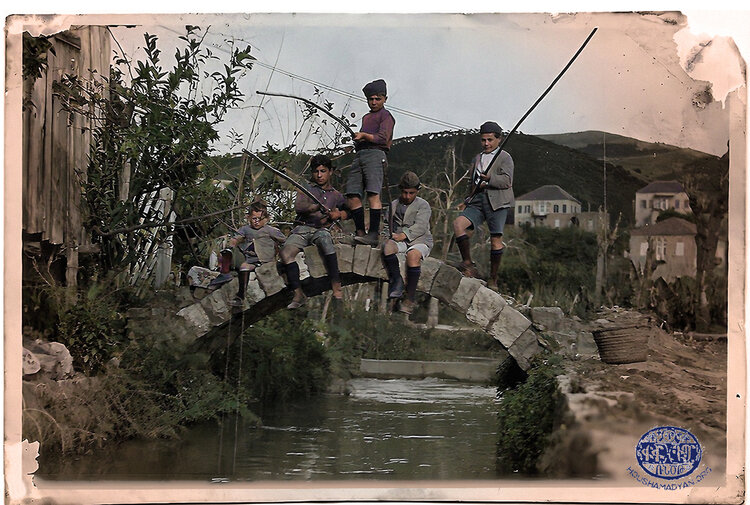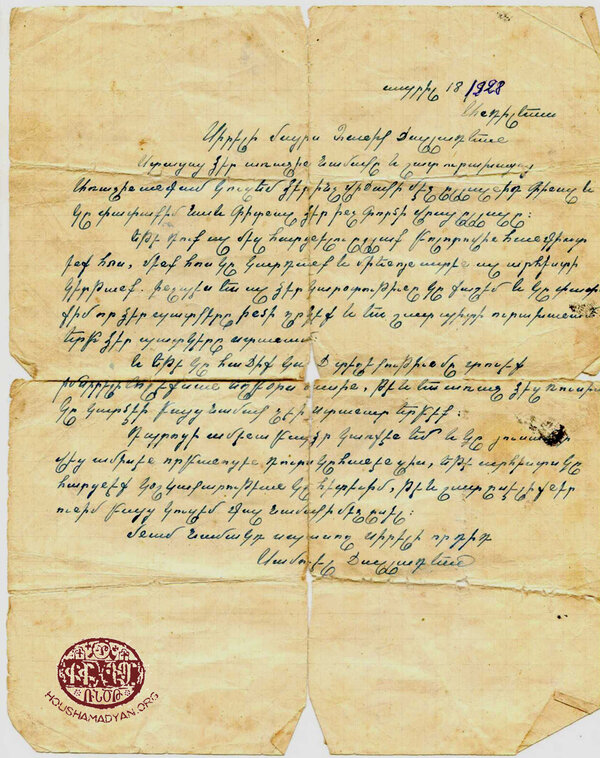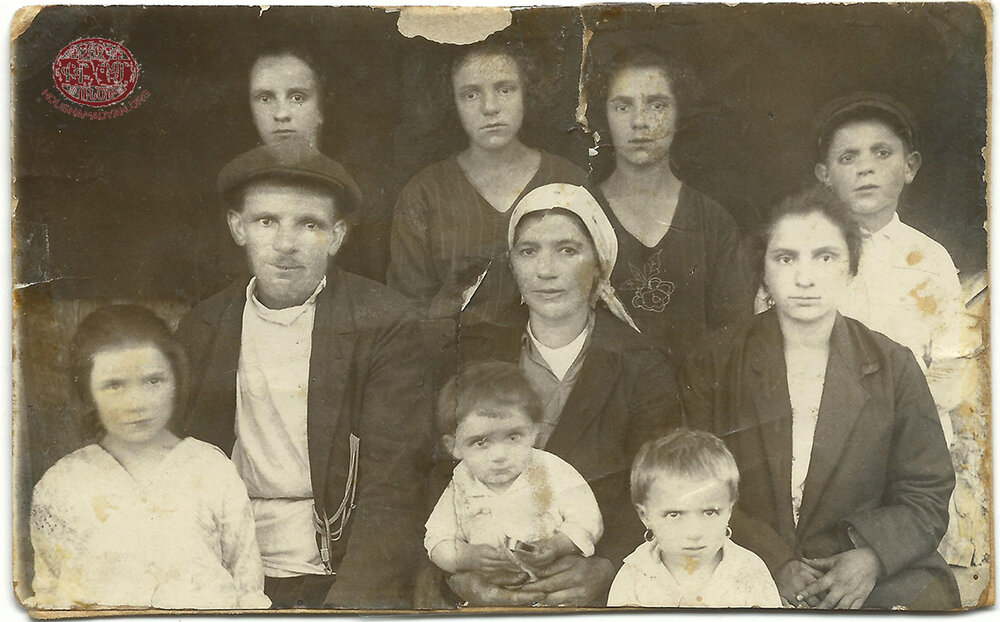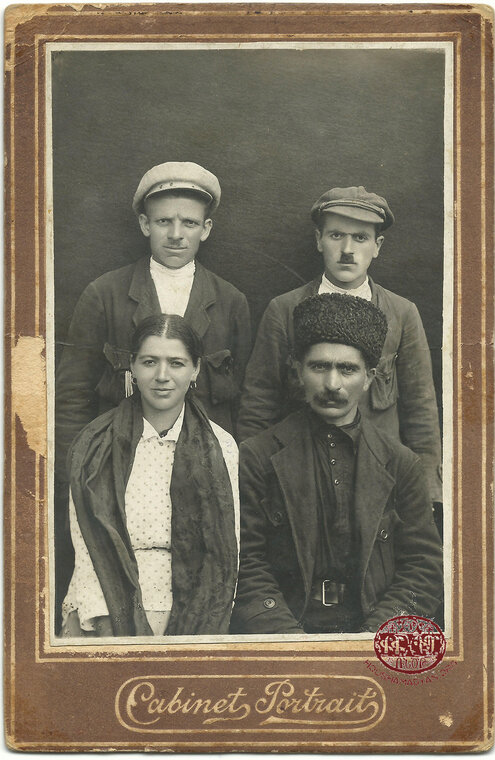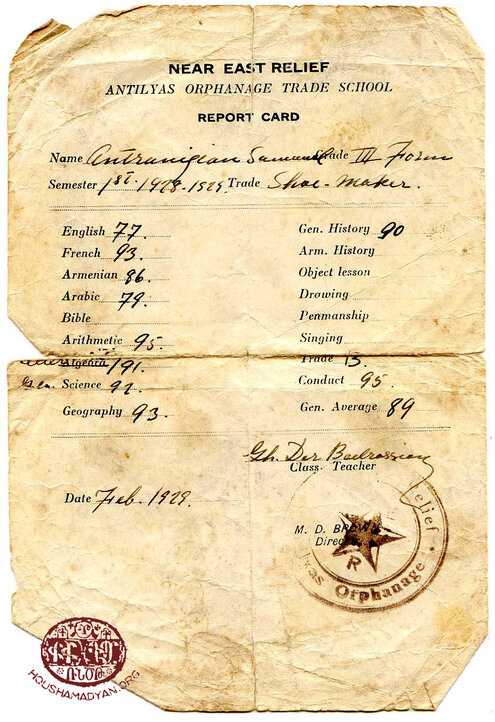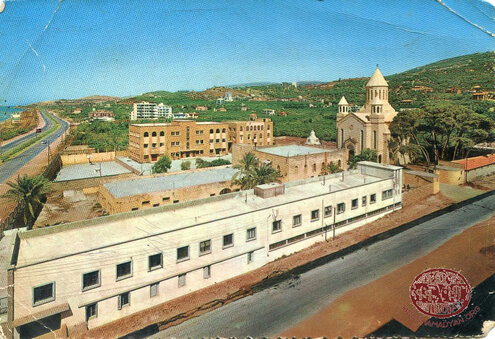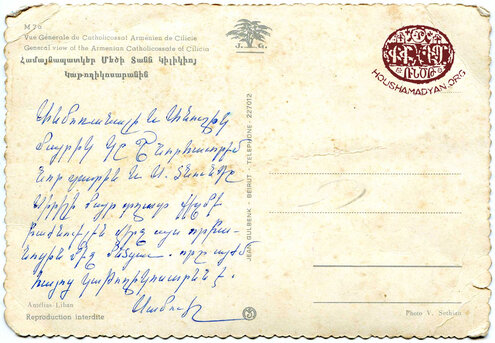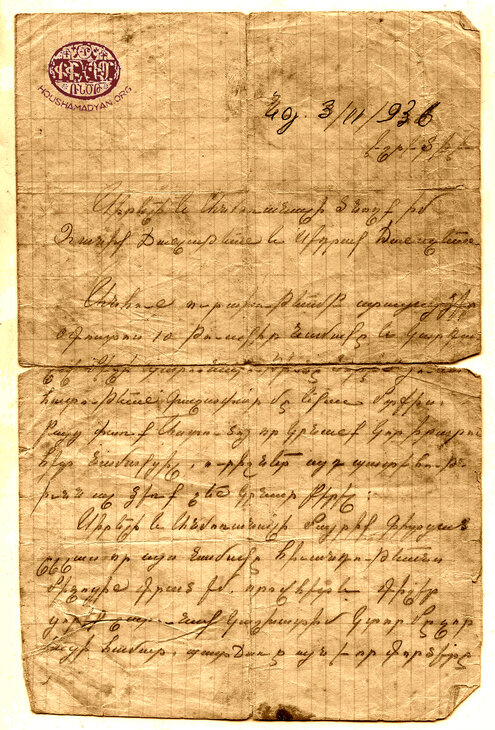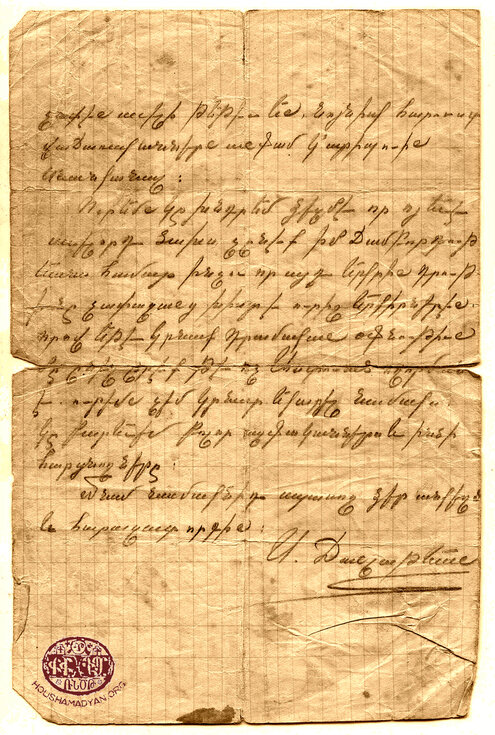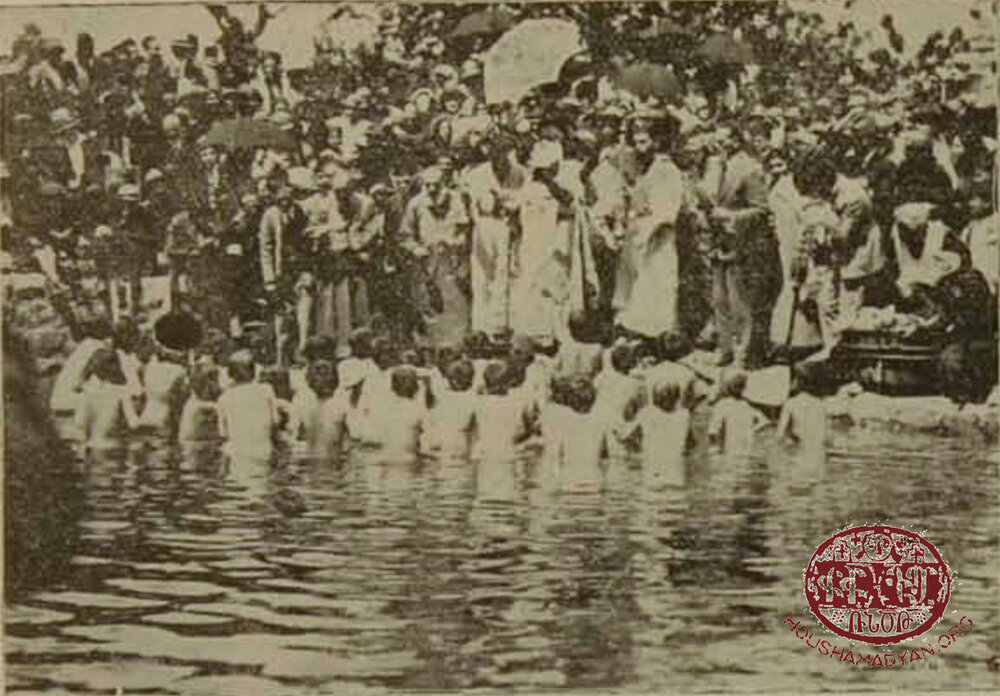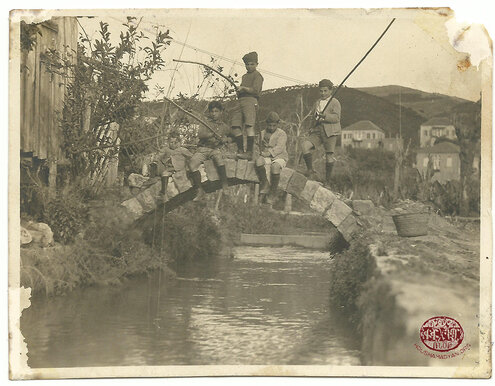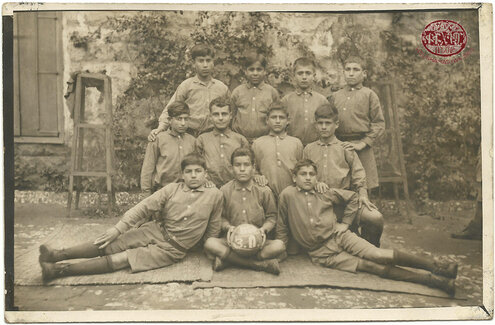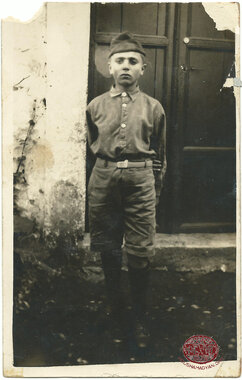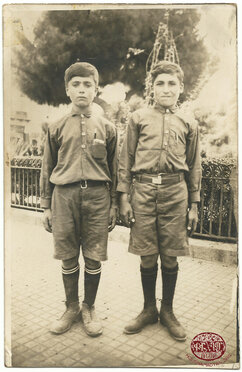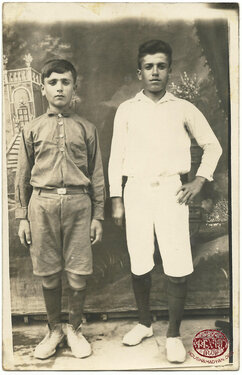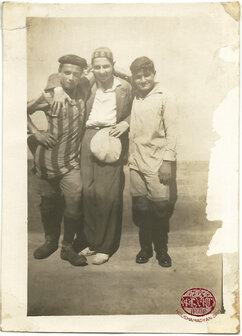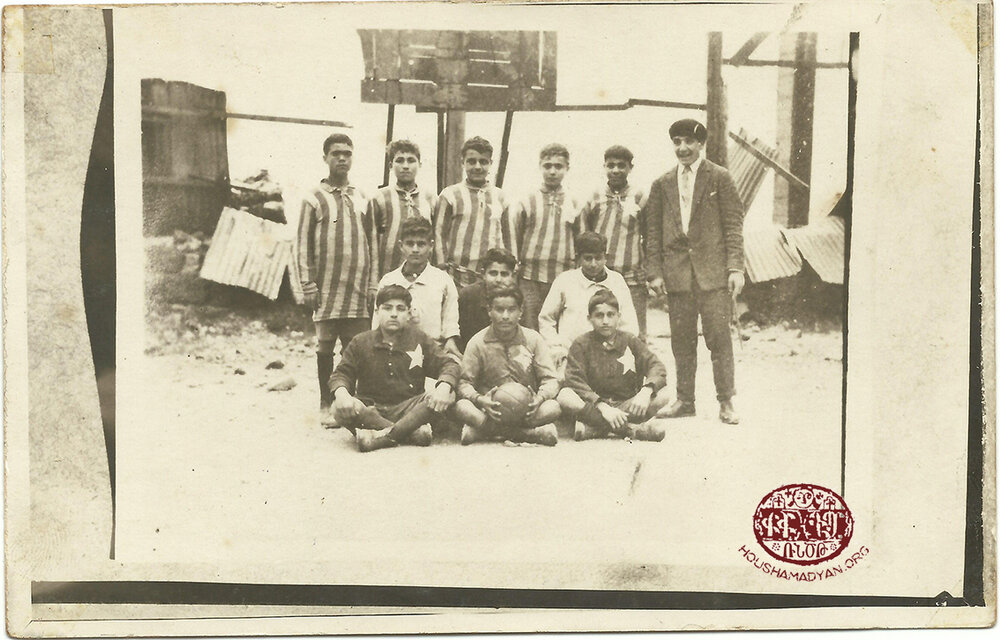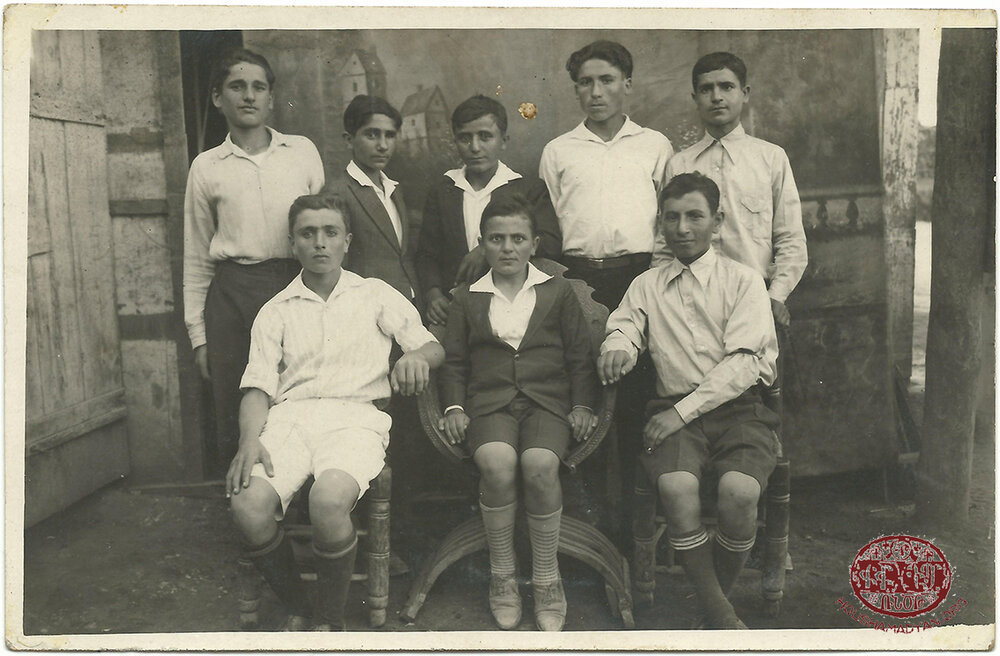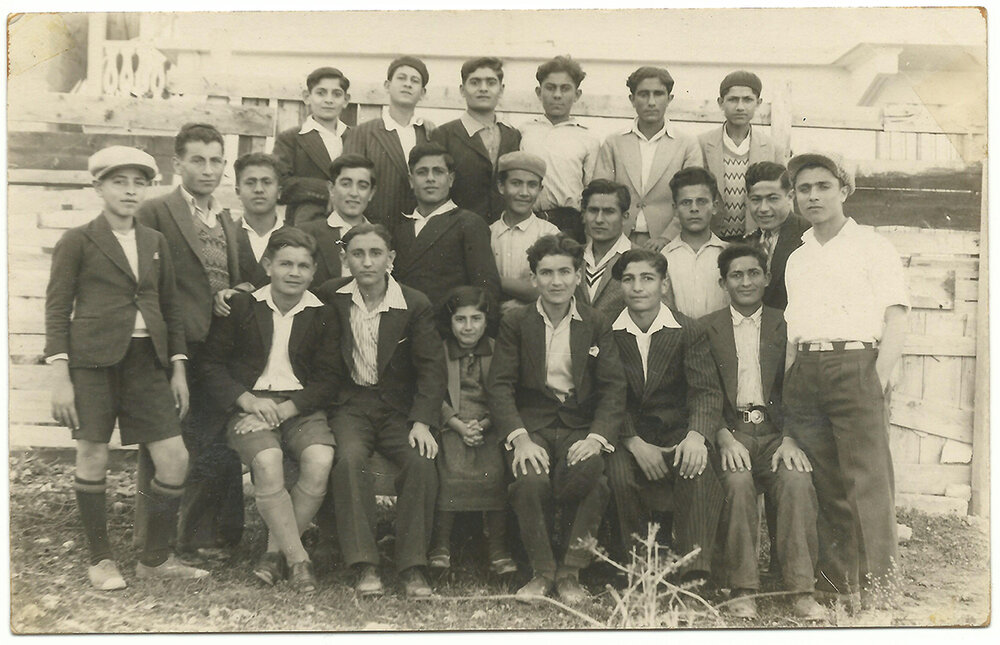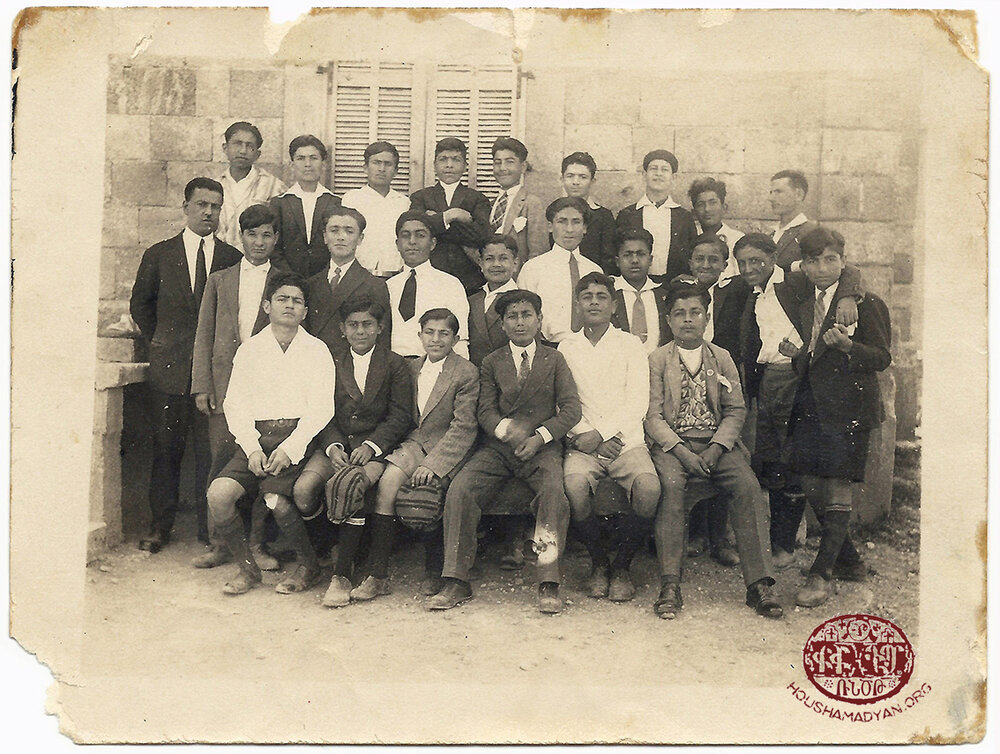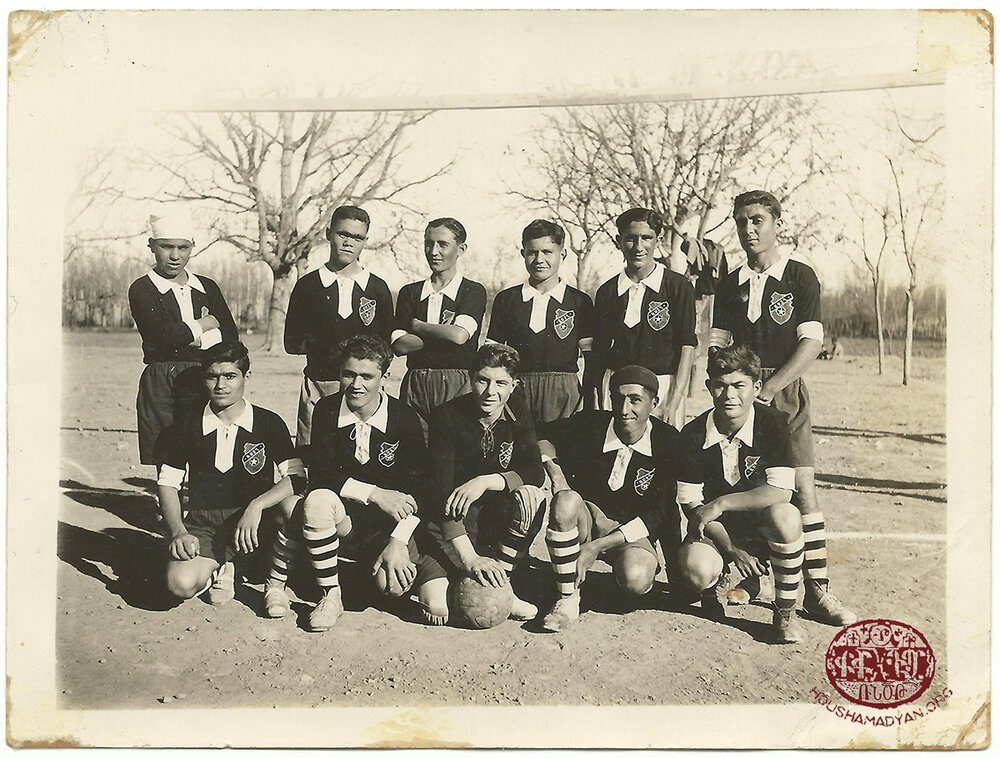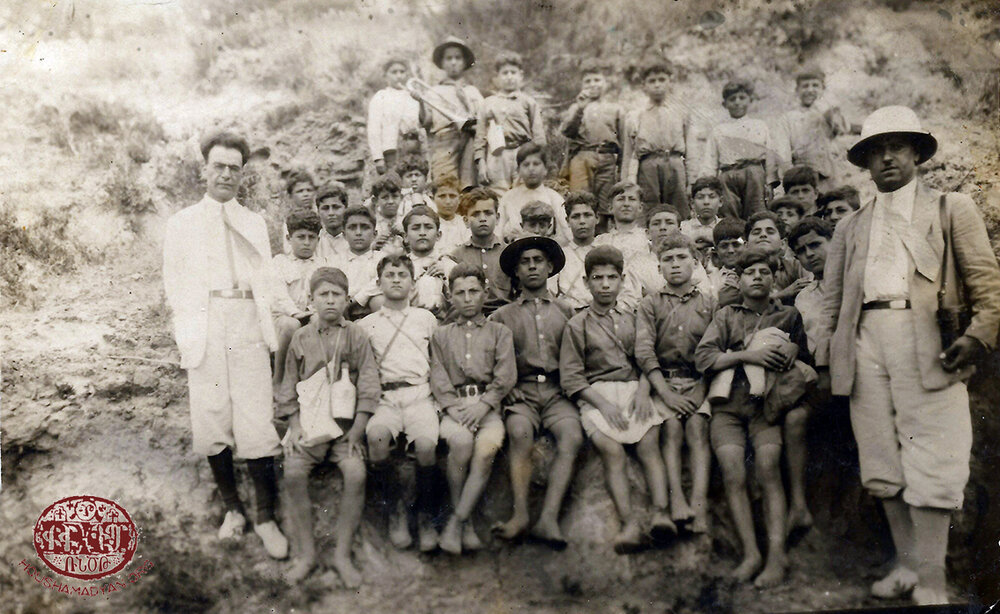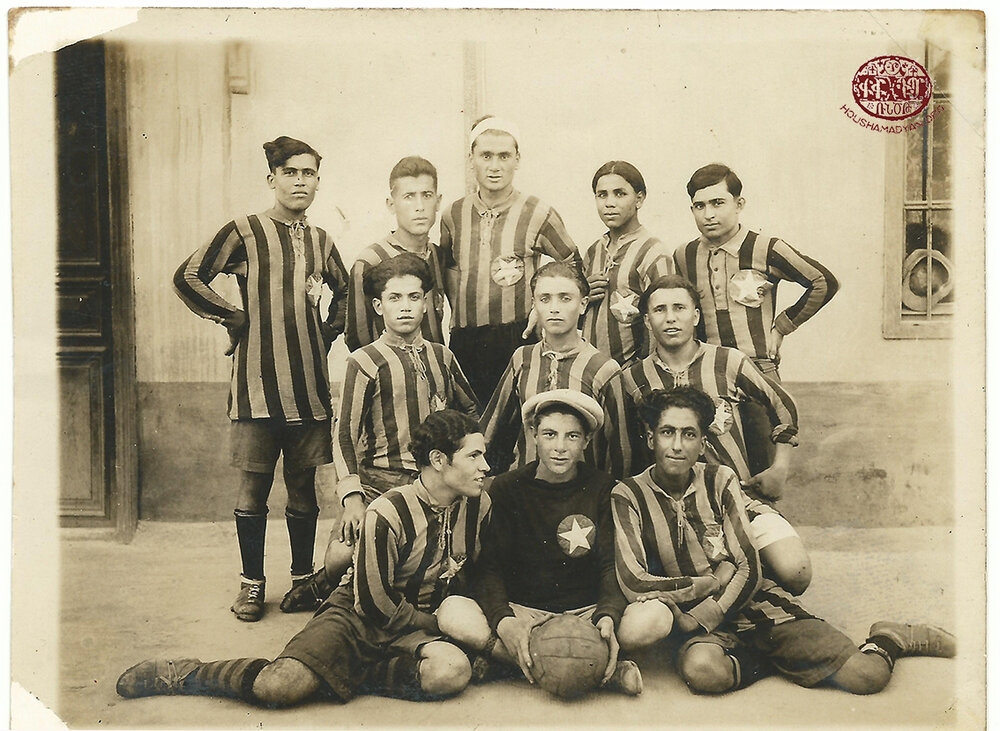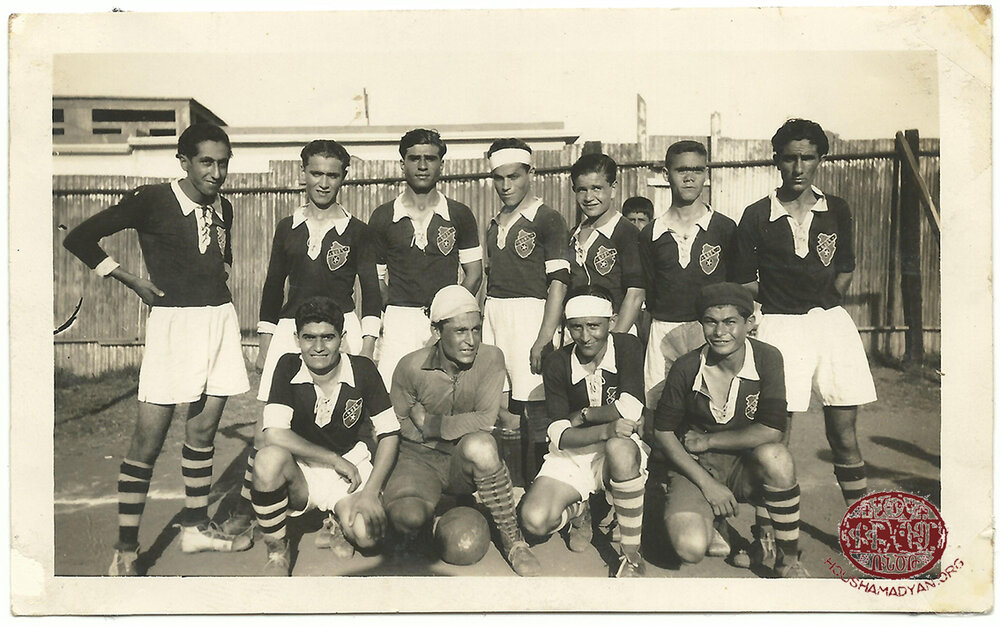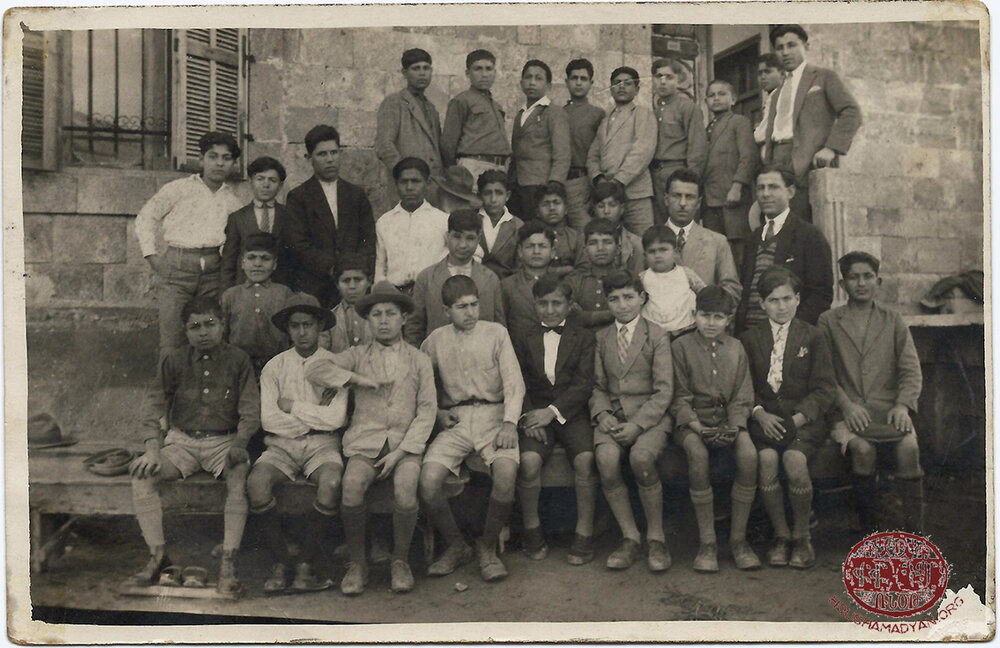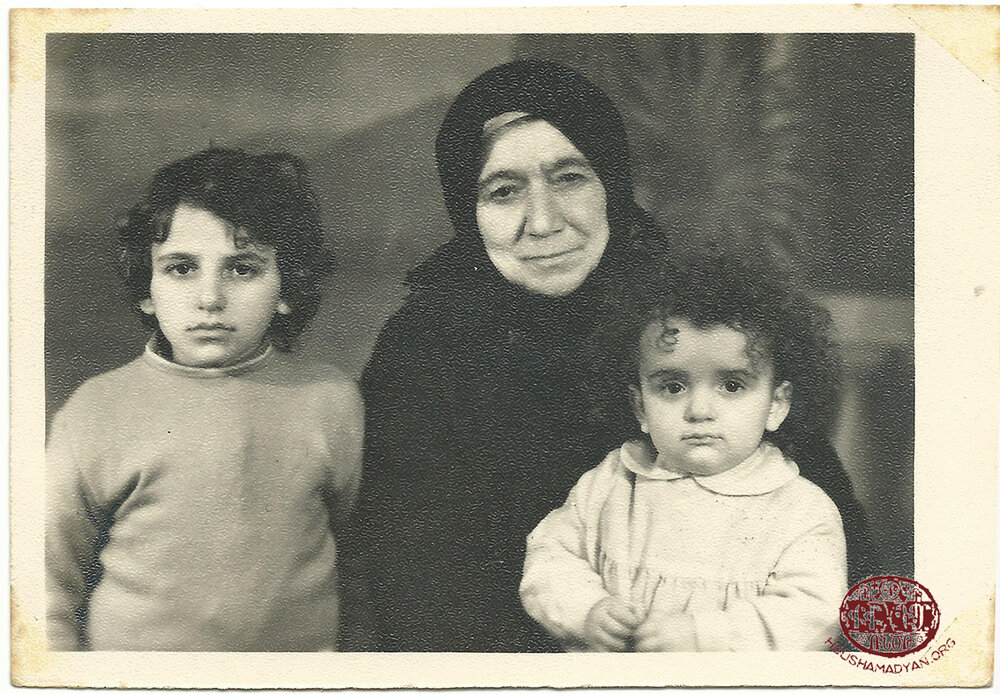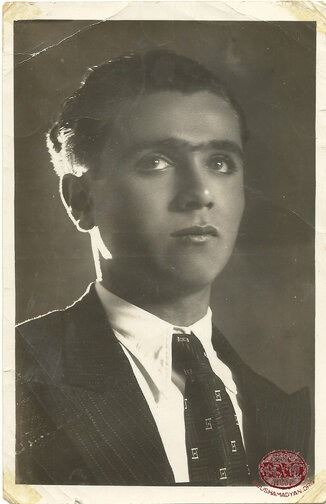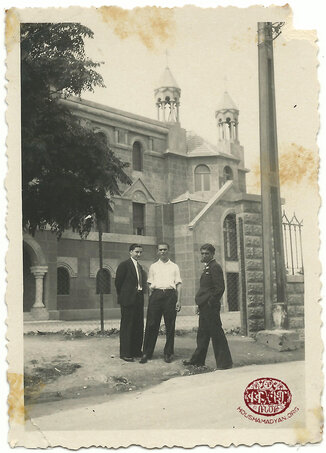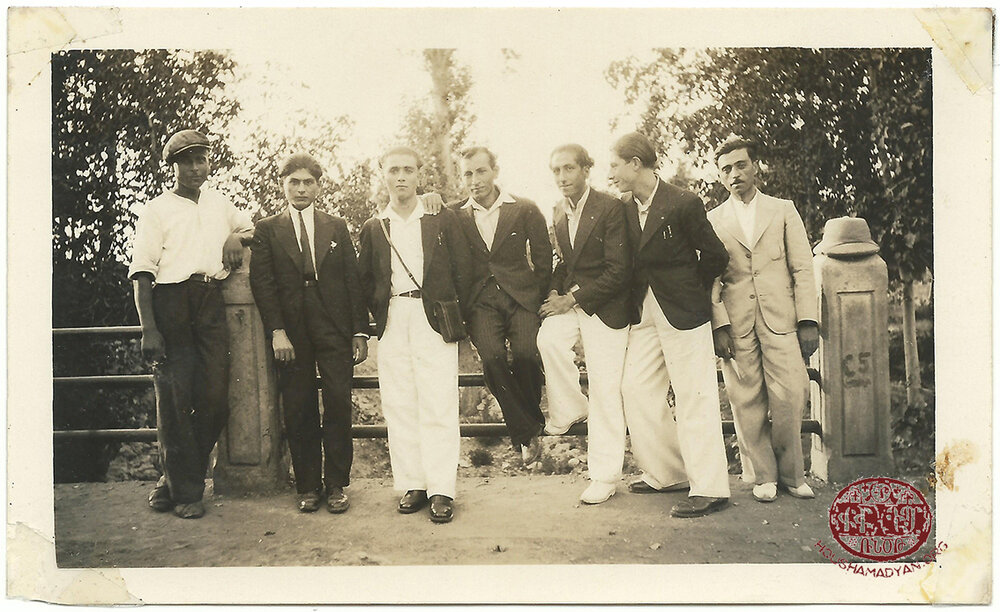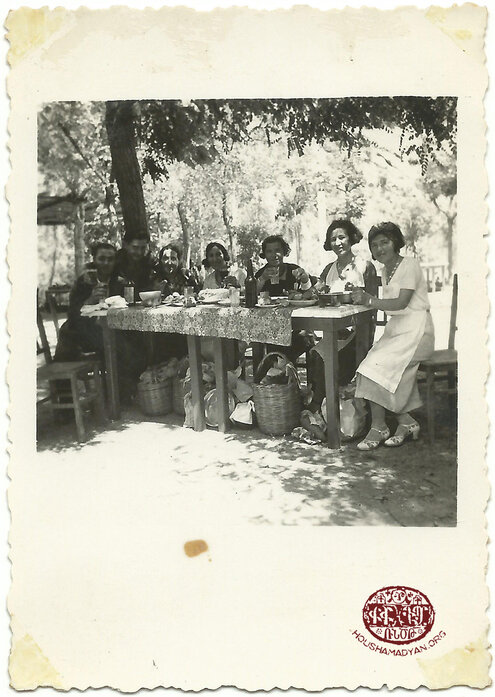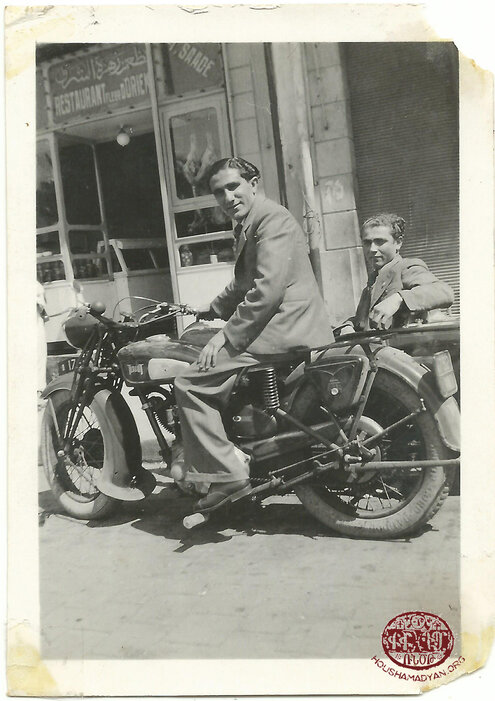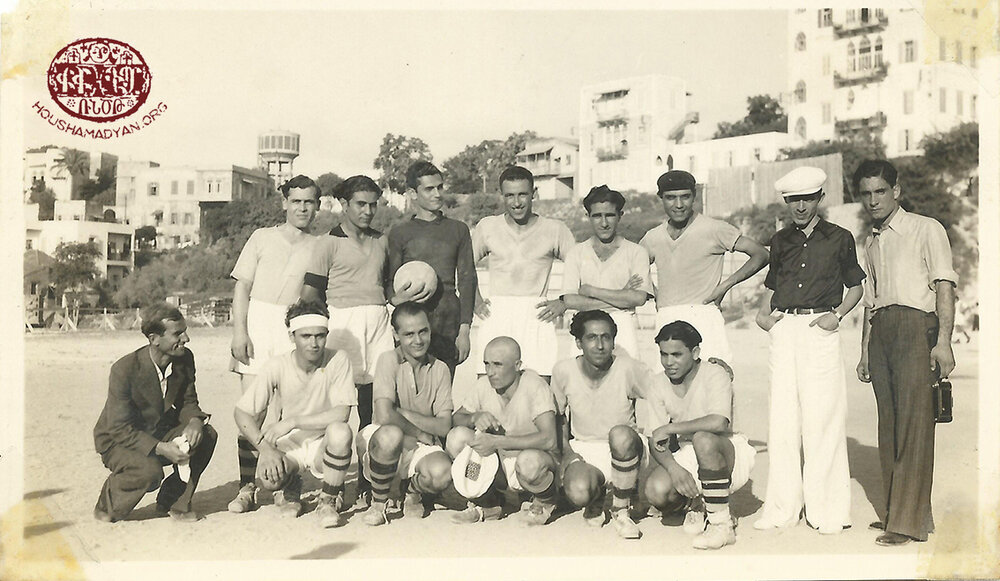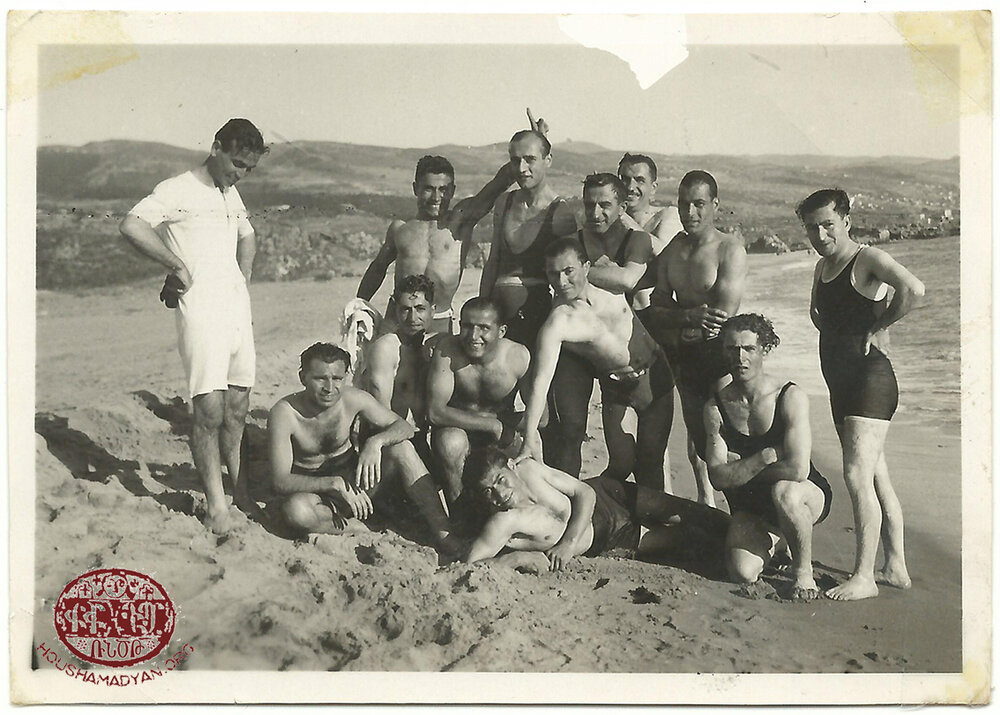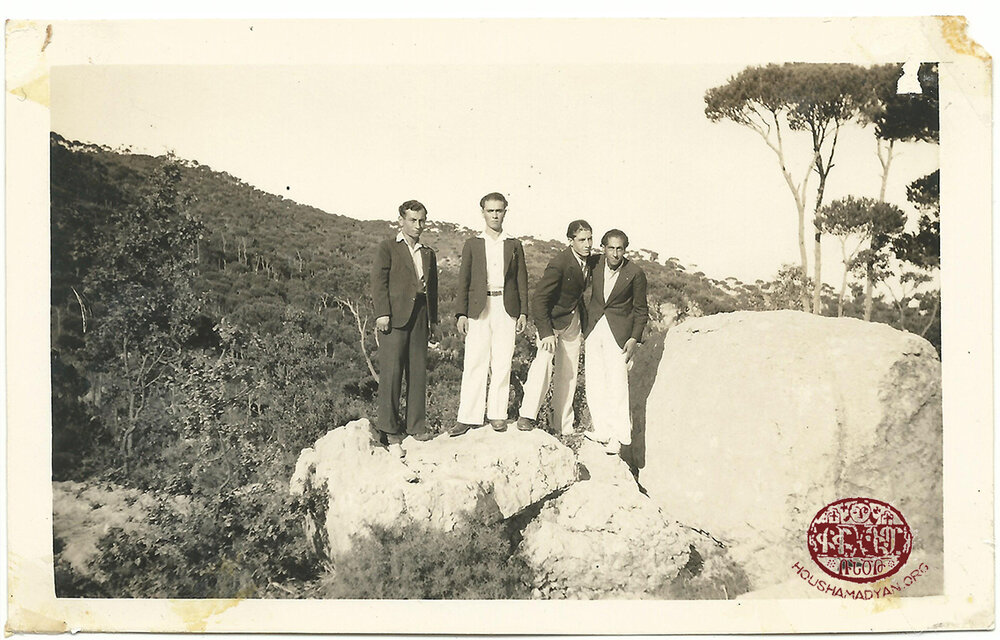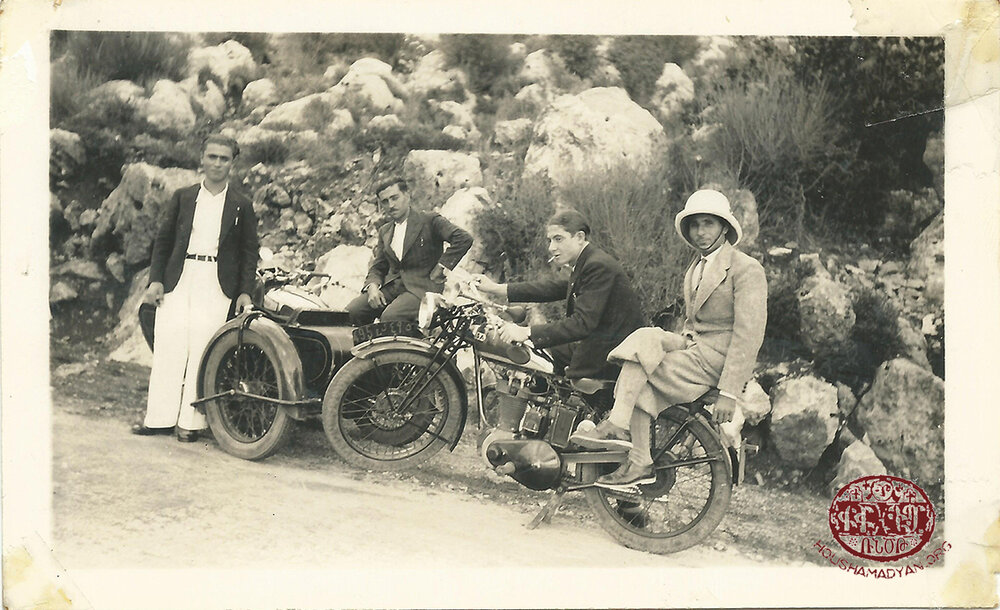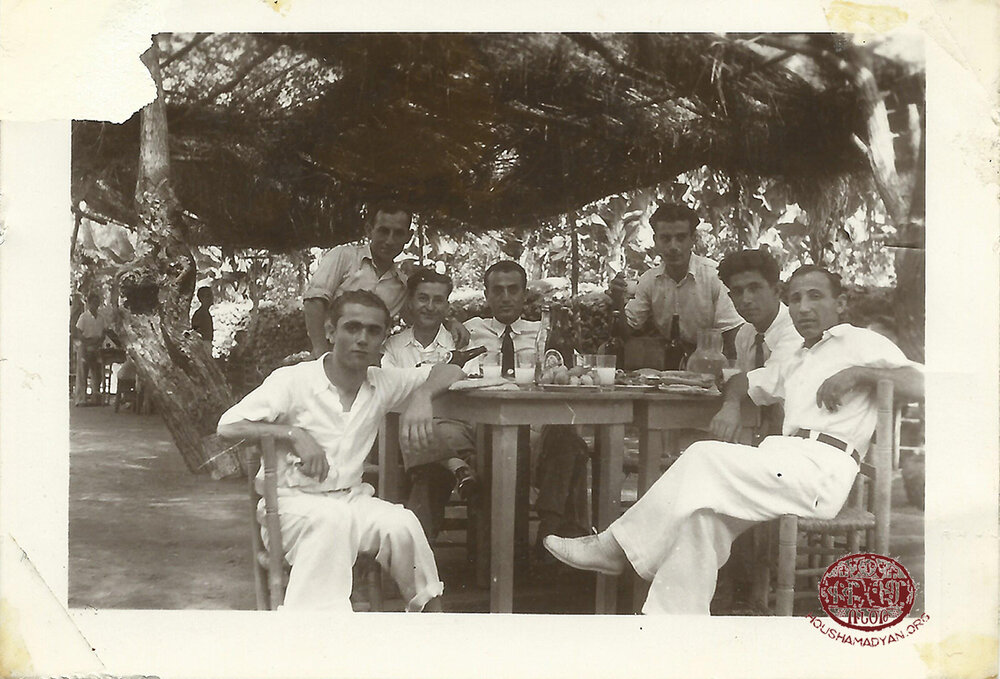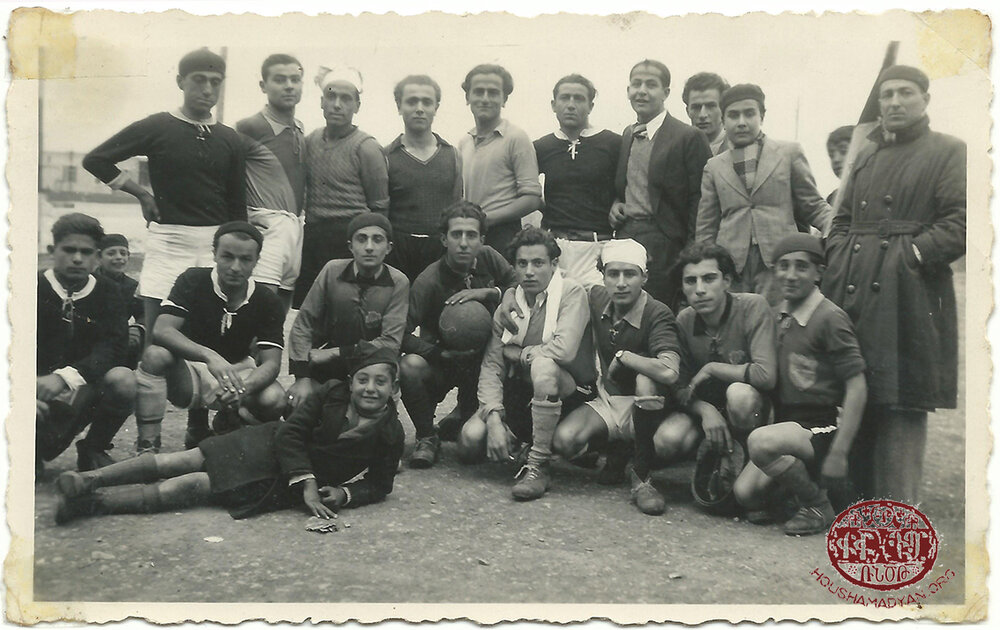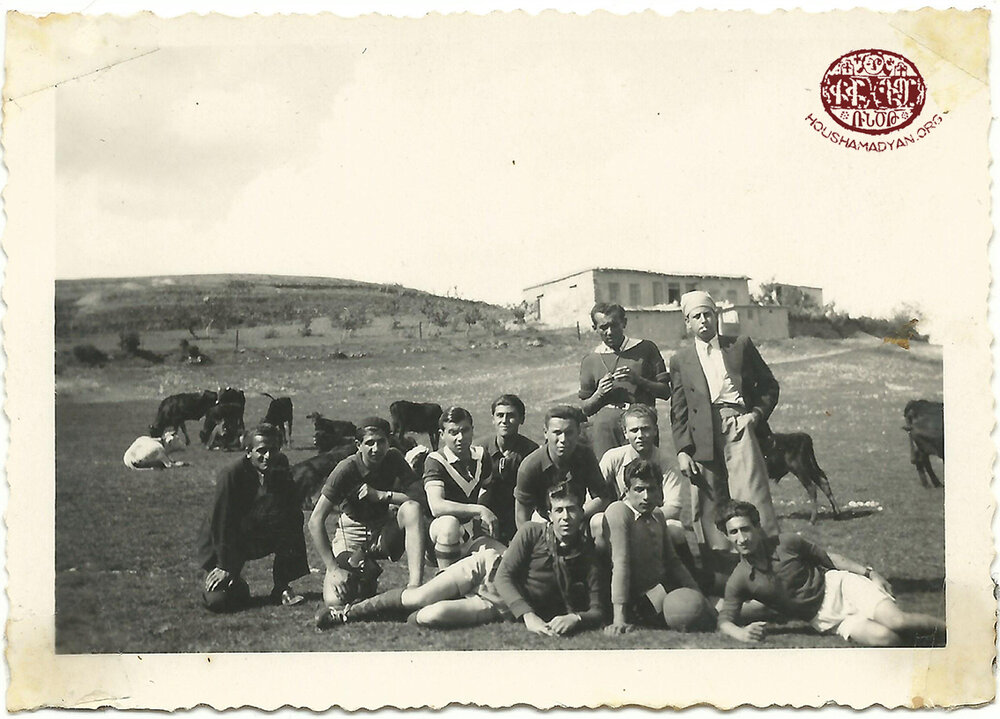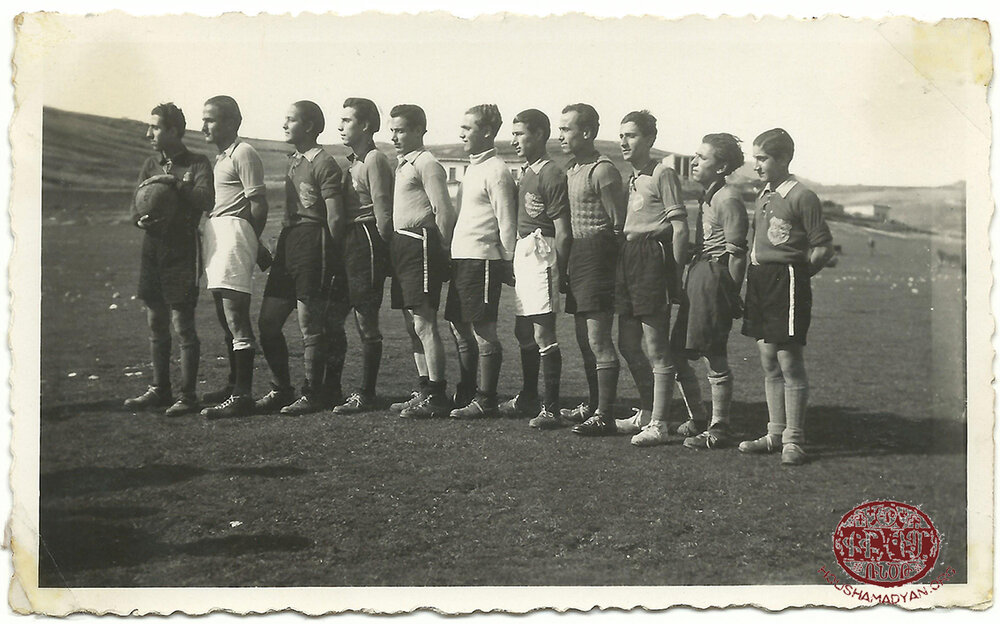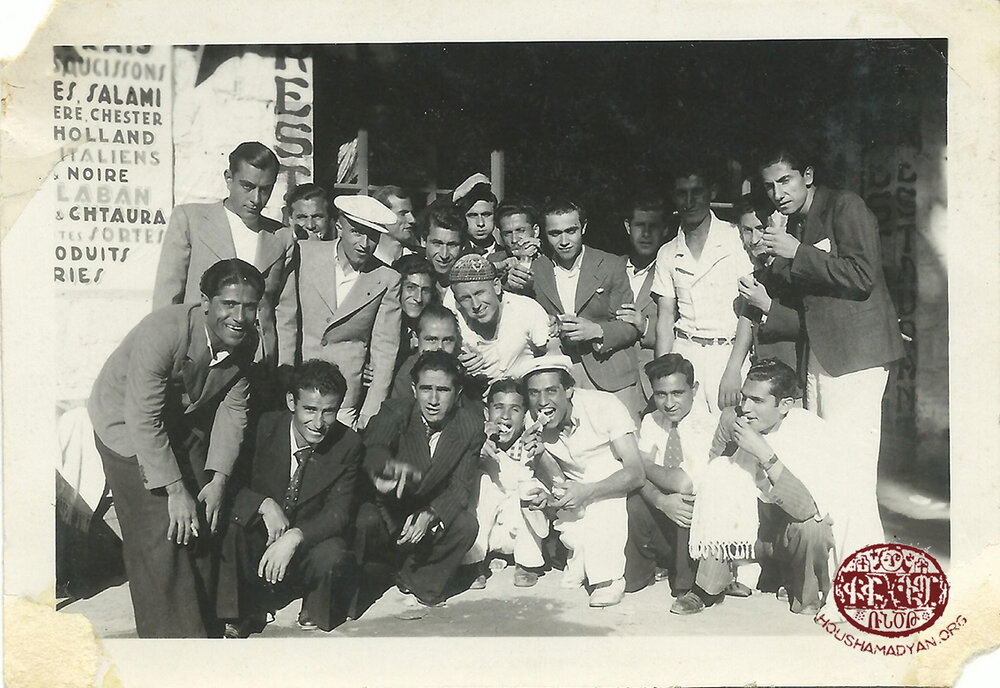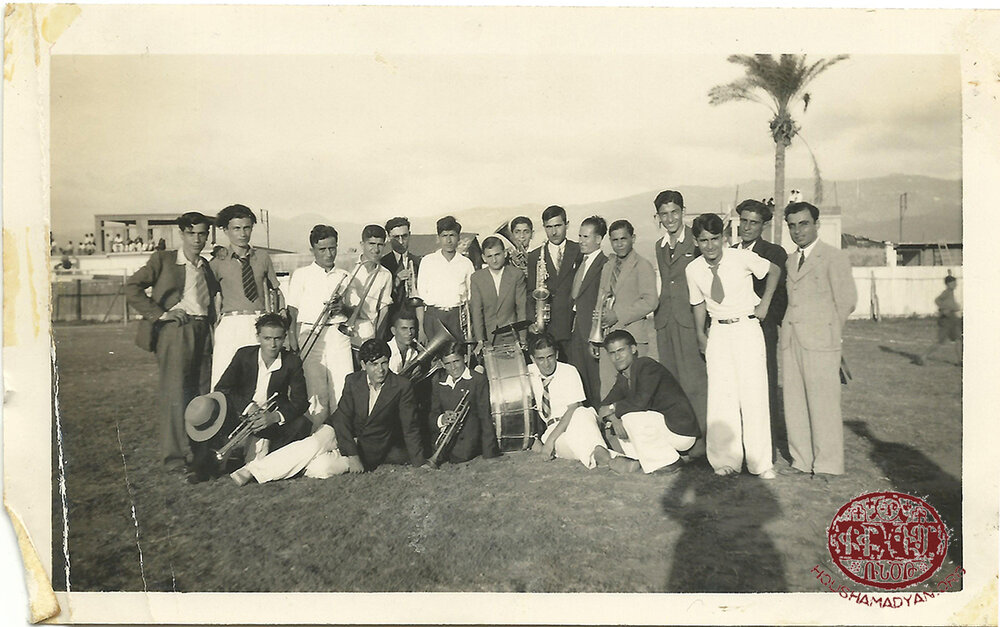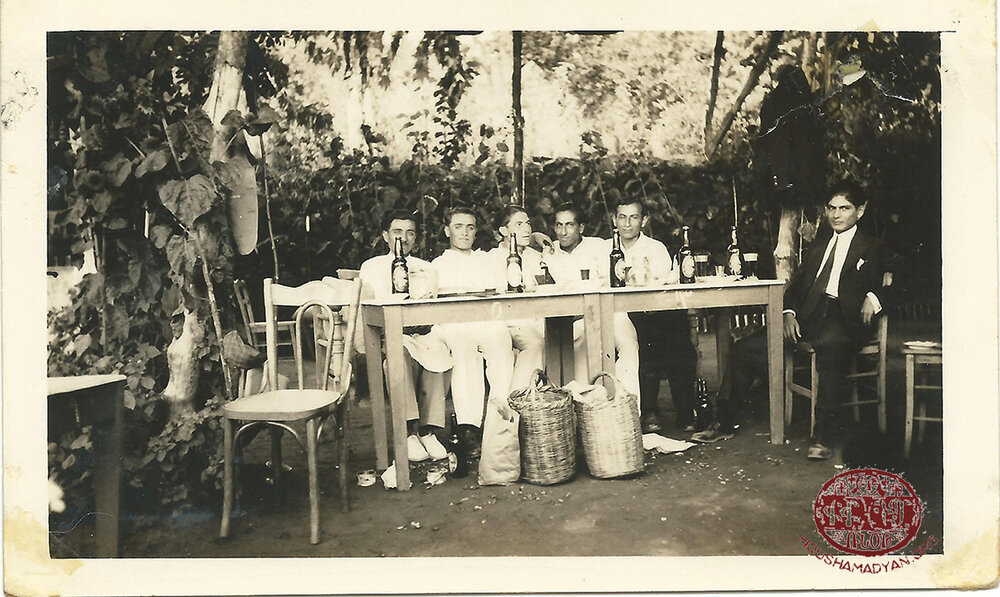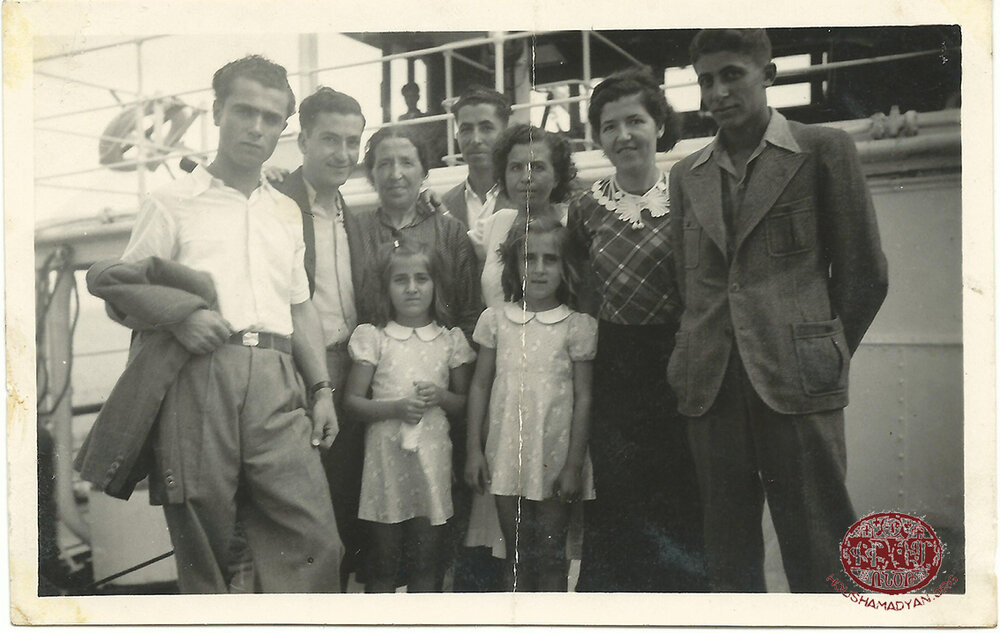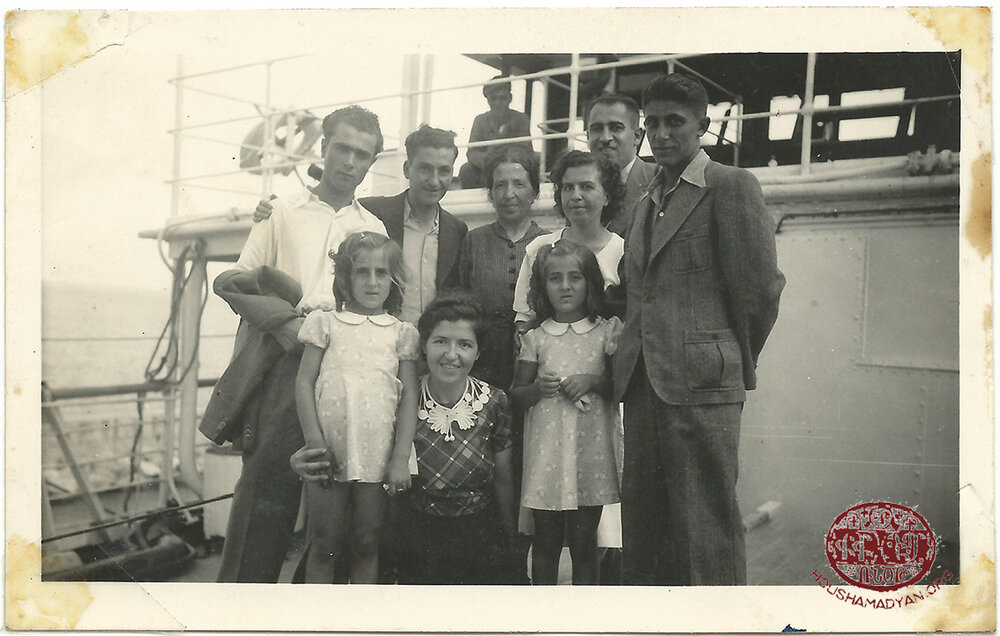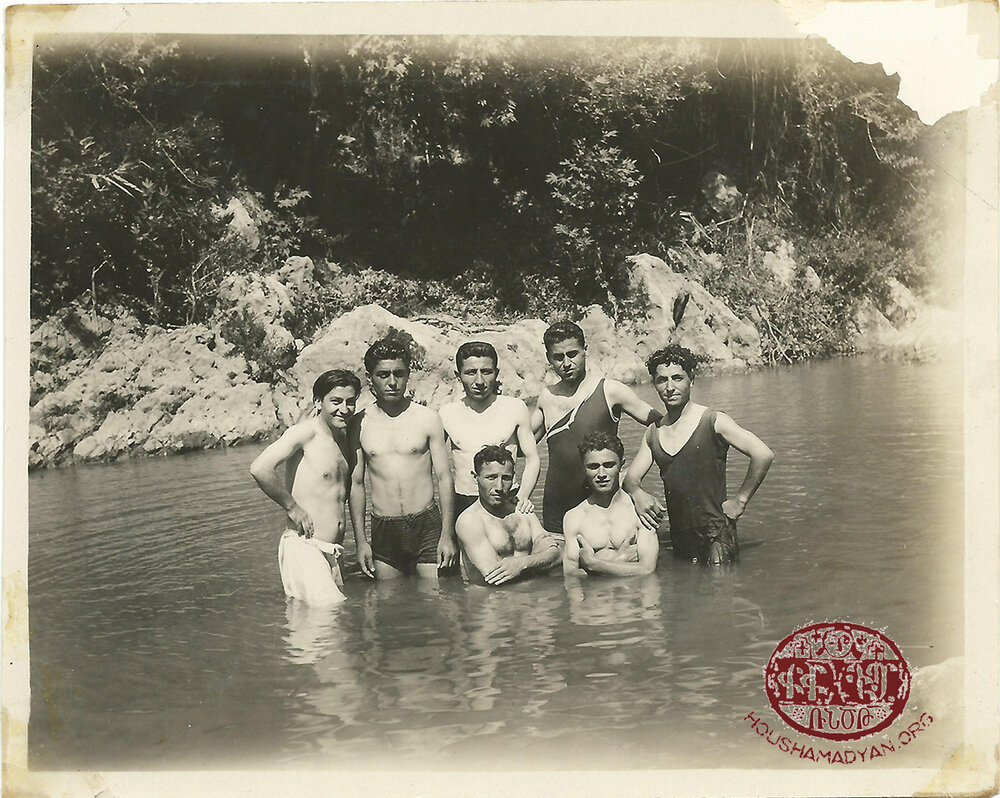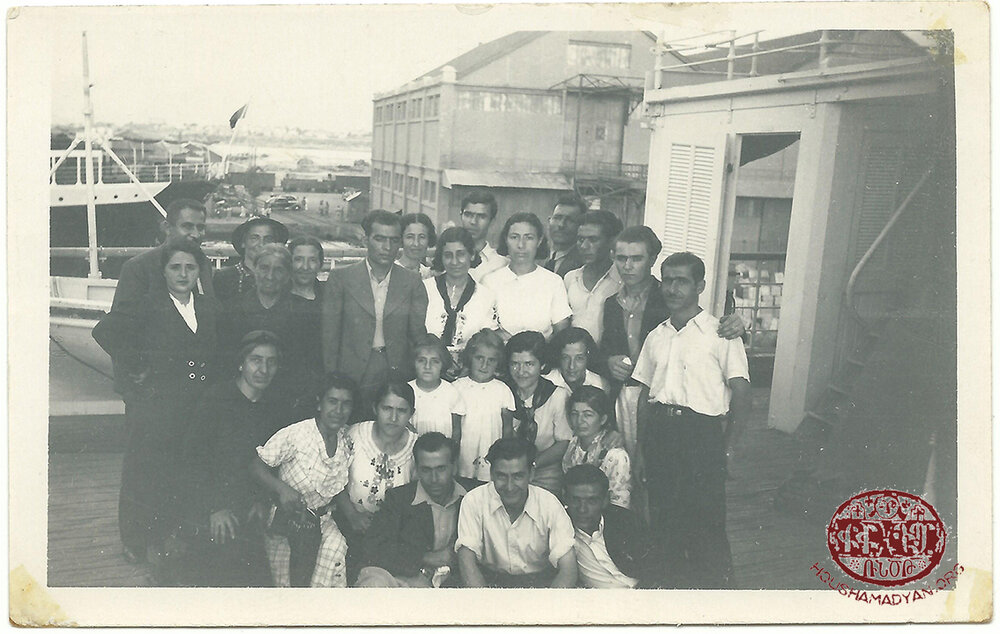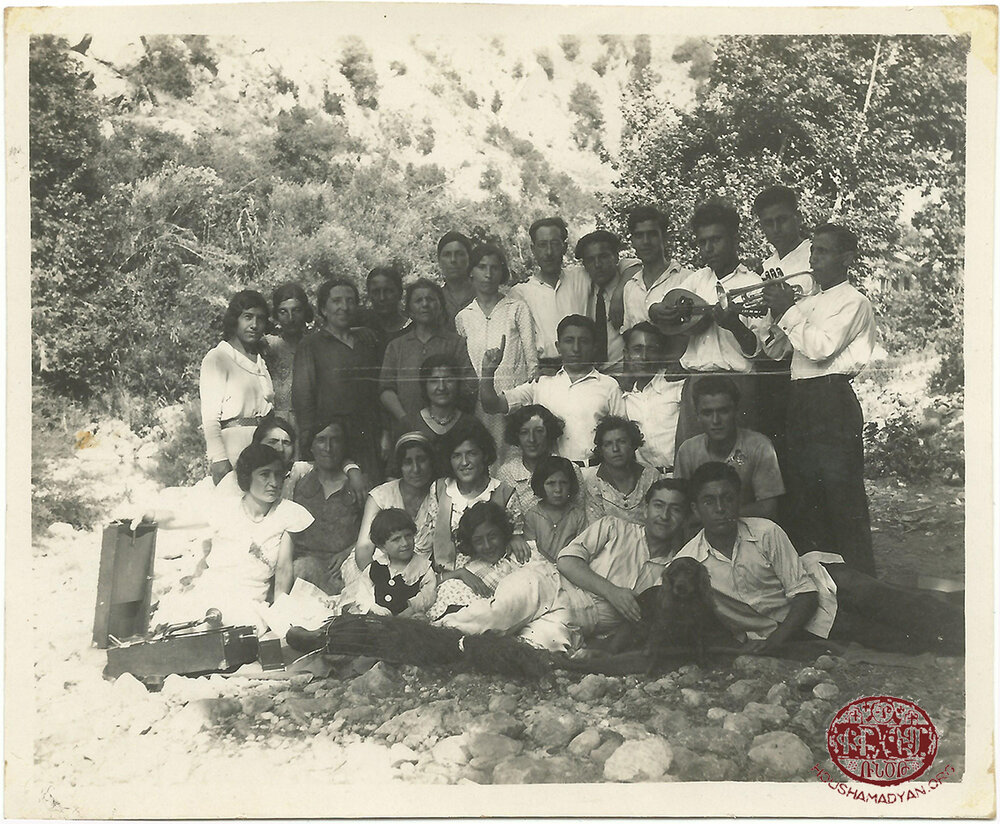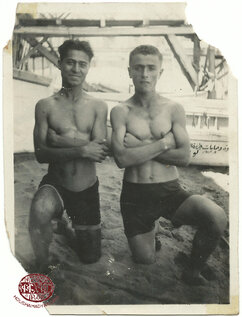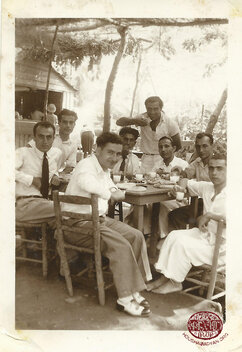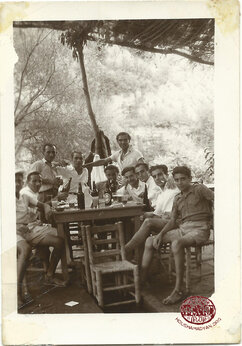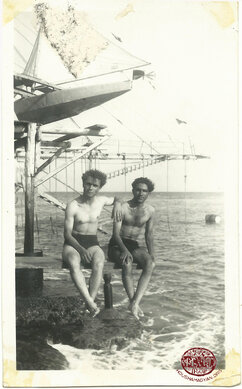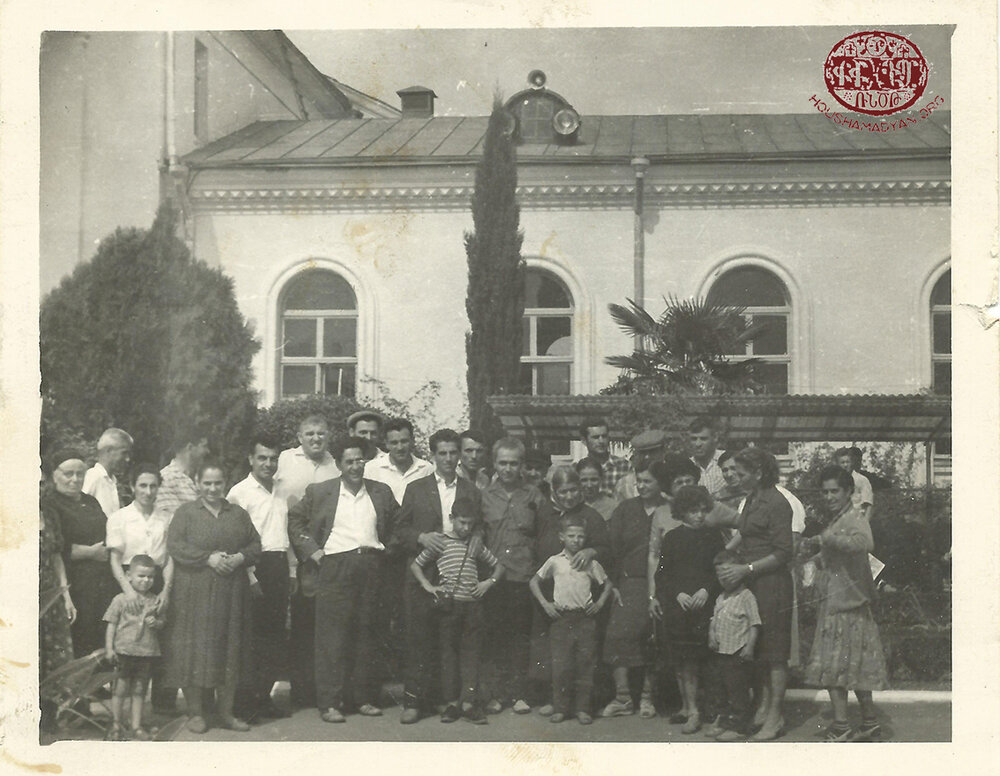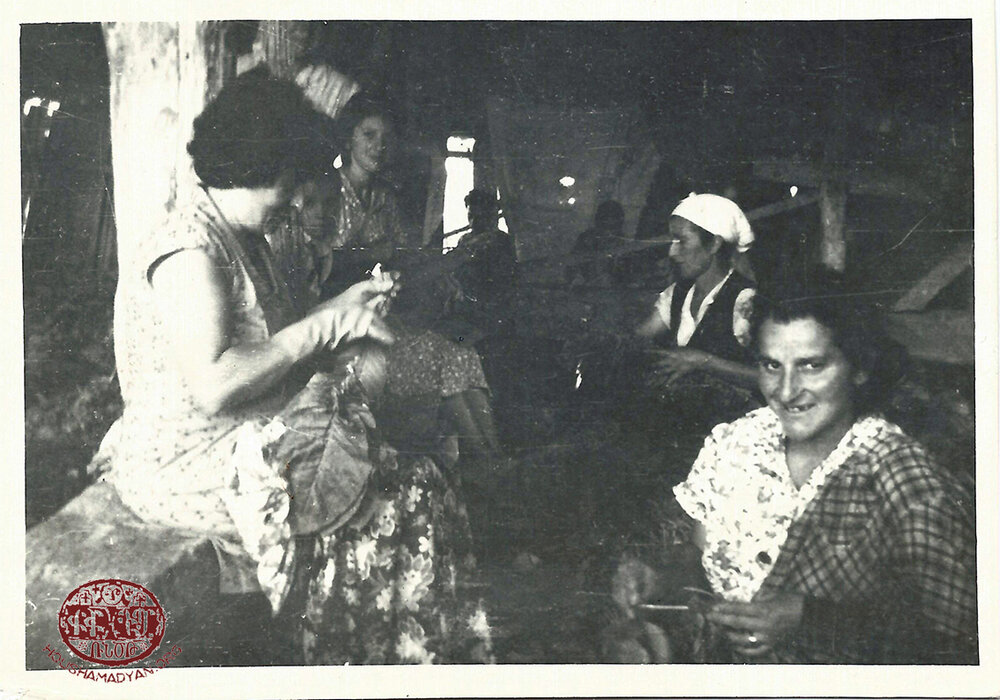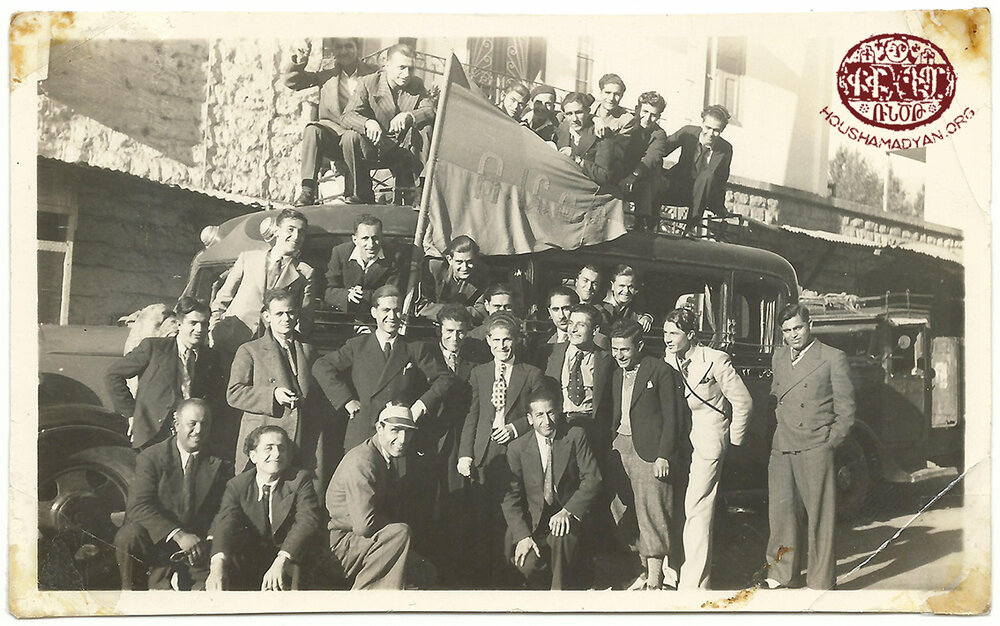Samuel Antranigian Collection – Beirut
28/04/23 (Last modified 28/04/23) - Translator: Simon Beugekian

Samuel Antranigian was born in Ordu, in 1912. He was the son of Khachig Djallatian/Djanlatian and Zanag Djallatian/Djanlatian (nee Kalousdian). Zanag was born in the Armenian-populated village of Kiraz Dere, in the Ordu region.
In 1915, when the deportation order for the local Armenian population arrived in Ordu, Khachig was serving in the Ottoman army. Zanag entrusted the three-year old Samuel to the care of a Turkish friend, then joined the death march.
The deportation caravan took Zanag all the way to Mosul. After experiencing the nightmare of the Genocide, she survived, and returned to Ordu after the end of the First World War. With the help of her brother-in-law, she was able to rescue her son, Samuel, from the Turkish family in whose care he had been placed. Zanag’s husband, Khachig, was also still alive. He had deserted from the army and had been living for years in the forests around Ordu. Thus, the entire family was reunited and resumed their lives in their hometown. They lived in a home that had belonged to another deported Armenian family, which had not returned. During these years, the couple had another child, a daughter, whose name is unknown.
In 1921, anti-Armenian sentiments flared once more in Ordu, this time fomented by the Kemalist authorities. Khachig was arrested and detained in an unknown location. Not even a trace of him could be found. Zanag and her children were forced to leave their hometown and take the road of deportation once again, alongside many other local Armenians. It was during this march that Zanag’s second child died of hunger. Eventually, the caravan of deportees approached the city of Diyarbakir. The recorded history of the family does not make it clear if this really was the city of Diyarbakir. Judging by later events, it was probably a different city, such as Kharpert or Mamuret-ul-Aziz. The deportees, by then, were famished and exhausted. A suggestion was made to send a group of youth into the city to procure food. Despite Zanag’s opposition, Samuel was included in this group. The nine-year-old Samuel never returned from this expedition…
A postcard sent by Samuel to his mother, Zanag, to wish her a happy Christmas and new year. The postcard features a photograph of the Catholicosate of the Holy See of Cilicia in Antelias, which had previously housed the Antelias Near East Relief (NER) orphanage. The inscription reads: “My dear mother; after being separated from you, your son was raised in this orphanage, which is now the Armenian Catholicosate.”
The survivors continued their journey without Samuel. They reached Mosul, a city with which Zanag was familiar from her first period of exile. She began working as a maid in the home of a Muslim family where she had worked before. Years later, Zanag provided an oral testimony of her experiences, which was transcribed. But clearly, she did not share all her recollections of these terrible years: “Oh, one can’t tell everything. It is unbearable when you are not your own master; when your own head belongs to someone else, whether it be a child or a senile crone. They order you to get on your knees, and if you want to live, you kneel…”
Zanag lived in Mosul for about a year, then returned to Ordu. Her loved ones were no longer there. All she knew was that her brother, Garabed Kalousdian, lived in Abkhazia. Anti-Armenian persecution continued in Ordu, and consequently, the remaining Armenians of the city were trying to escape Turkey. A group of about 80 of them, including Zanag, hired a boat, and together, secretly sailed to the coast of Adler (near Abkhazia), which had already been swallowed up by the Soviet Union. A large number of Armenians from Ordu already lived in this area. Zanag immediately found her brother, who lived in a village then called Odlough in the Bilenkovo region. Here, Zanag remarried, to Setrag Djansuzian, who was also marrying for the second time and had five children from his previous marriage. Zanag raised these five children. After Setrag’s death, Zanag married for a third time.
As for Samuel, after being separated from his mother near Diyarbakir (or Kharpert or Mamuret-ul-Aziz), he was forced to hide, living the life of a fugitive for months. Then, at some point, kind locals suggested that he enroll in the local orphanage, which was probably one of the American Near Easter Relief (NER) orphanages operating in the Kharpert area. Samuel remained at this orphanage until 1922, when all the American orphanages in Turkey were closed and moved to Lebanon. Samuel, too, was taken to Lebanon, and his new home became the NER orphanage in Antelias, on the Mediterranean coast.
In 1925, the Catholicos of the Holy See of Cilicia, Sahag II, who had temporarily established his seat in Aleppo, visited the Antelias orphanage. A mass baptism ceremony for the orphans was held in the Faouar River, which flowed nearby. It is said that during this ceremony, the Catholicos asked Samuel his name and surname. The latter, after considering the question for a moment, thought of General Antranig, and stated that his name was Samuel Antranigian. Thus, his name was officially changed from Samuel Djanlatian to Samuel Antranigian.
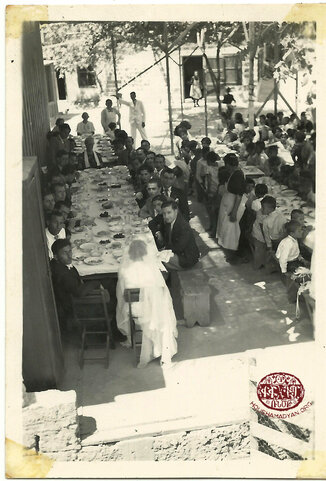
In addition to the daily classes that he attended at the Antelias orphanage, Samuel also learned cobblery. He was a member of the orphanage’s “Vorodoum” [“Thunder”] football team. One of his friends from the orphanage, Papken Der Kevorkian, mentioned in his memoirs that Samuel was a good fishermen, especially of eels, which the locals called hanklis. This type of fish was plentiful in the river of Antelias, which flowed right past the orphanage. Eels were a highly sought-after delicacy, and were difficult to catch. Samuel would catch them and sell them to the locals.
Zanag, who had lost all trace of her son on the second deportation march, knew by the late 1920s that he was alive and living in Lebanon. The American administrators of the orphanage made several attempts to reunite young Samuel with his mother, but these were in vain. Samuel sent his first letter to his mother on April 18, 1928, from Antelias. It was in response to the first letter he had received from her, probably earlier in the same year. Samuel’s missive was short, providing an overview of his situation and asking about her mother’s circumstances. From another letter that Samuel sent to his mother in 1936, we learn that Zanag was making efforts to bring Samuel over to Abkhazia. But the political situation at the time probably precluded travel between Lebanon and Soviet Abkhazia. Samuel signed all his letters to his mother with the surname “Djanlatian.”
Upon leaving the orphanage, Samuel, alongside many of his peers, settled down in the Lebanese city of Zahle, where he practiced cobblery. As a ward of the orphanage, Samuel had demonstrated his athletic prowess. After leaving the institution, he began playing for the League Star football team, which consisted of orphans who had graduated from Lebanon’s American orphanages. In the 1940s, he also played for the Armenian General Athletic Union (HMEM) football team of Lebanon, which won the Lebanese championship in those years. After leaving Zahle, Samuel settled down in the Achrafieh neighborhood of Beirut, and later rented a room in Maarada, in the center of the city. He sold shoe accessories for a living.
In 1943, Samuel married Mary Pilibosian. Their first son, Khachig, was born in 1944, but died soon thereafter. The couple then had two daughters, Hasmig and Knarig, and two more sons, Ara and Ishkhan. The family lived in the Bourj Hamoud neighborhood.
Samuel was finally able to visit his mother in 1964. He traveled by ship to Odessa, accompanied by Mary and Ishkhan. From Odessa, they took a plane to Adler, near Abkhazia. Zanag lived in Gantiadi (present-day Zandrypsch), a coastal town. Samuel and his family stayed there for about two months. This reunion of mother and son, after a separation of 43-44 years, was vividly and movingly described in an article by Yeprem Zakarian, which was based on the testimonies of “Grandma Zanag.” Prior to making the trip to Abkhazia, Samuel had written to his mother on June 10, 1964. In this letter, he wrote: “My dear mother; I only ask you to be brave when we see each other. Please don’t be overwhelmed with emotion or fall sick. It will not be easy to see each other after 44 years of separation and yearning. Again and again, I beg you to stay strong and healthy, as you have throughout these years. Steady yourself when we kiss each other.”
Zanag died in 1986. Samuel died in Lebanon, in 2005.


Sources
- This article was prepared using materials provided by Ishkhan Antranigian (Samuel’s son) and Garo Derounian.
- Yeprem Zakarian, “43 Years Later,” Tsayn Hamshenagan [The Voice of Hamshen], number 3-4 (80-81), March-April 2011, pp. 6-8.
- Papken Der Kevorkian, Gyanku Vorpanotsneroun Mech [Life in the Orphanages], Beirut, 1963.
